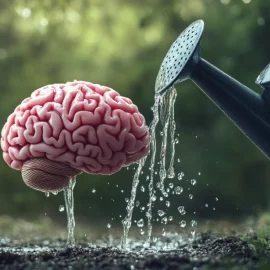

This article is an excerpt from the Shortform book guide to "The Gardener and the Carpenter" by Alison Gopnik. Shortform has the world's best summaries and analyses of books you should be reading.
Like this article? Sign up for a free trial here.
What are the most common attachment styles in children? Who are children most likely to believe based on their attachment style?
If children have a strong bond with their parents, they’re likely going to believe their testimony over a stranger’s. But, if a child lacks that necessary bond, a stranger’s word might seem more trustworthy to them.
Discover how a child’s attachment style affects whom they trust.
Attachment Styles in Children
In The Gardener and the Carpenter, Alison Gopnik describes several studies that explore how young children assign credibility to testimony. Children are likely to believe what they’re told from a young age, but sometimes they’re told conflicting information by different people, and which person they trust often depends on their relationship with that person. It also depends on the quality of that relationship. Studies done on four year olds suggest that children often believe relatives like their mother over strangers, but this can vary depending on the type of attachment styles in children.
Attachment theory describes three types of attachment based on experiments that briefly separate infants from their mothers to see their reactions. Secure babies get upset in their mothers’ absence and are happy when she comes back. Avoidant babies behave as if they don’t care when their mother leaves or returns, but measuring their heart rates shows that they’re very upset. Anxious babies are upset when the mother leaves and continue to be upset when she returns. In cases where the mother and the stranger are equally likely to be correct, children with a secure attachment are more likely to believe their mother over a stranger, but children with an avoidant attachment are equally likely to believe their mother or a stranger.
Another experiment tested how much children believe answers that are likely to be wrong. Children were shown an image of a fish-bird hybrid that mostly looked like a bird. The mothers in the experiment called the animal a fish and the strangers called it a bird (which was more likely to be correct because it more closely resembled a bird). In cases where the stranger gives information that’s more likely to be correct, both secure and avoidant children were more likely to believe the stranger, but anxious children tended to believe their mother even when she was more likely to be wrong.
How Attachment Styles Affect Trust and Criticisms of Attachment Theory
Experts suggest that attachment styles relate closely to how much a child feels they can rely on their parent. An avoidant child doesn’t feel they can rely on their parent to meet their needs—including their need for information—so they’re not inclined to trust what the parent tells them because they don’t believe it’s more reliable than what a stranger says. Anxious children, on the other hand, are overly reliant on the parent to the point that their independence and curiosity are hindered—meaning they’ll believe their parent implicitly rather than using their own reasoning to determine an answer.
Experts suspect anxious attachment styles may be the result of inconsistent parenting, which causes children to be confused about when they can rely on their parent to meet their needs. This confusion likely leads to over-reliance (and misplaced trust) as babies seek excessive reassurance to relieve their insecurity.
However, attachment theory has faced a great deal of criticism since its inception. It was established to explain why some children grew up to be more successful and have better mental health than others, but critics point out that research into attachment doesn’t support the claim that secure attachment improves these outcomes in adulthood. They also note that it fails to take into account factors such as a child’s temperament, socioeconomic status, and cultural differences, all of which affected children’s behavior as assessed in attachment studies.
Others suggest that attachment theory is politically biased toward the conservative—that it places an undue burden on mothers for the development of their child’s attachment style, and that it was used in the 1960s to place a social stigma on women entering the workforce.
Based on these criticisms, Gopnik’s theories on what affects a child’s belief in different people’s testimony may be explained by factors other than attachment styles.

———End of Preview———
Like what you just read? Read the rest of the world's best book summary and analysis of Alison Gopnik's "The Gardener and the Carpenter" at Shortform.
Here's what you'll find in our full The Gardener and the Carpenter summary:
- The difference between gardner and carpenter parenting styles
- Why parenting should not be a form of work but an act of love
- How the schooling model fails to effectively support children’s learning






